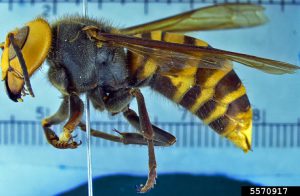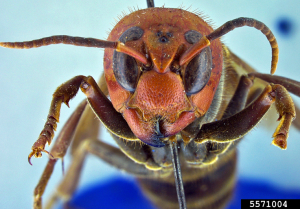One of the most recent trendy global news of an invasive insect species is the Asian giant hornet (Vespa mandarinia). The Asian giant hornet is the largest hornet species in the world, hence the name ‘giant.’ The Asian giant hornet is native to Japan and other Southeast Asian countries; its spread has been limited to these regions.

In the United States, the Asian giant hornet made its first appearance in the Fall of 2019 in Washington State. Scientists are still learning how this hornet species ended up in the United States. Its detection resulted in intense efforts by scientists to eradicate it from Washington state and to prevent it from spreading to other states.
There was no report of the Asian giant hornet being present in North America before its recent sighting in Washington State. So far, there has not been any spotting of this hornet species in Florida.
The fact that this hornet species can survive in a range of climates, in and outside its native environments, has got some experts worried that it could become a problem, especially for the already declining honeybees colonies.
While human deaths from the Asian giant hornet has been reported in Japan and China due to high doses of toxic venom from several hornets’ stings, this species does not ordinarily go around looking for humans or pets to sting. Their attacks on humans occur in extreme cases when they are provoked and when individuals receive incredibly high loads of the poison.

Also, the possession of large mouthparts makes it possible for the Asian giant hornet to behead other honeybees, giving them the name ‘murder hornet.’ The presence and spread of this Asian hornet can have serious ecosystem consequences, especially when primary pollinators such as the honeybees are the targets.
Routine monitoring efforts and public awareness/education campaigns in states where this hornet species is not a problem yet would help determine when they are present and inform appropriate actions to mitigate their establishment and spread. The success of the public education efforts hinges on the public being taught how to distinguish the Asian giant hornet from other species, that resemble it, but are less harmful or even harmless.
Do you think you have seen this hornet species or unsure about what you have seen? Reach out to the Florida Department of Agriculture and Consumer Services (FDACS) for help with identification.
Check out our UF entomology and Nematology EDIS article for details about the ‘trendy’ Asian giant hornet.
 0
0
